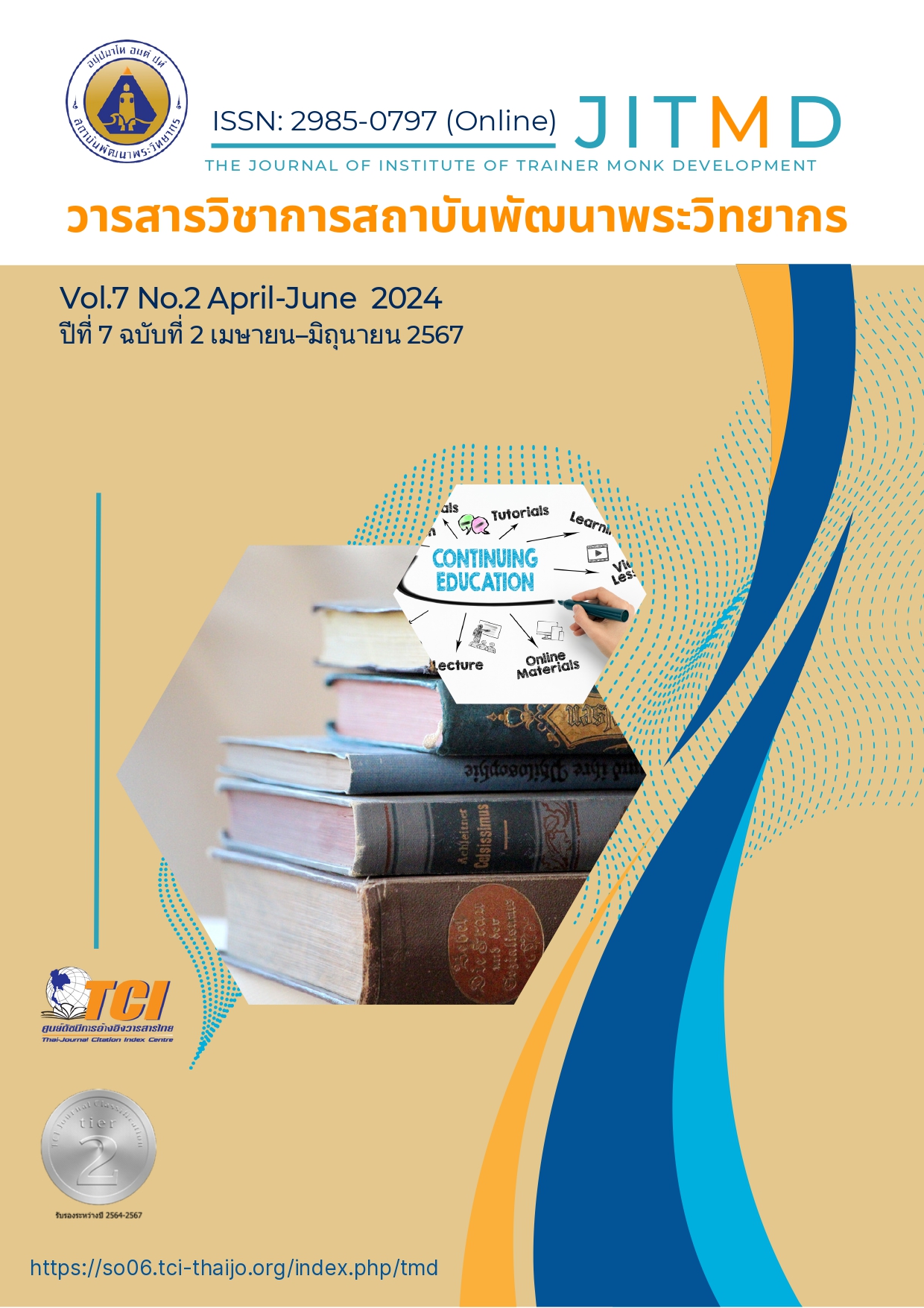Academic Leadership of School Administrators SungaiKo-lok District Narathiwat Province under the Narathiwat Primary Educational Service Area Office 2
Main Article Content
Abstract
This research aims to 1) To study the academic leadership of school administrators. 2) To Compare academic leadership of school administrators, classified by gender, work experience, and school size. 3) Summarize recommendations for the development of academic leadership of school administrators in Su-ngai Kolok district under the Narathiwat primary education service area office 2, This survey research involves a sample group of 186 teachers working in schools in Sungai Kolok District, under the jurisdiction of the Narathiwat Primary Educational Service Area Office, Area 2, during the 2022 academic year. Data collection tools include questionnaires, and statistical analysis involves percentages, means, standard deviations, t-tests, F-tests, and content analysis. The results showed that 1) The overall academic leadership of school administrators in Su-ngai Kolok district under the Narathiwat primary education service area office 2., are at a high level. 2) When comparing the academic leadership of school administrators in Su-ngai Kolok district under the Narathiwat primary education service area office 2., based on gender, work experience, and school size, it was found that teachers, both male and female, have similar overall opinions. Similarly, teachers with different levels of work experience have similar opinions about the academic leadership characteristics of educational administrators. However, teachers working in schools of different sizes have significantly different opinions at the .001 level of statistical significance. 3)Recommendations for the development of academic leadership characteristics of educational administrators include promoting the assessment of students based on their actual abilities, giving importance to students with special talents, evaluating the quality of students' learning outcomes, and ensuring that teachers have modern educational technology to foster innovation.
Article Details

This work is licensed under a Creative Commons Attribution-NonCommercial-NoDerivatives 4.0 International License.
บทความที่ได้รับการตีพิมพ์เป็นลิขสิทธิ์ของวารสารวิชาการสถาบันพัฒนาพระวิทยากร
ข้อความที่ปรากฎอยู่ในบทความที่ได้รับการตีพิมพ์ในวารสาร ถือเป็นความรับผิดชอบของผู้เขียนบทความ และข้อคิดเห็นนั้นไม่ถือว่าเป็นทัศนะและความรับผิดชอบของกองบรรณาธิการวารสารวิชาการสถาบันพัฒนาพระวิทยากร
References
กิ่งกาญจน์ สุขสำราญ. (2565). ภาวะผู้นำทางวิชาการของผู้บริหารสถานศึกษา ในกลุ่มอำเภอปลวกแดง สังกัดสำนักงานเขตพื้นที่การศึกษาประถมศึกษาระยอง เขต 1. การค้นคว้าอิสระศึกษาศาสตรมหาบัณฑิต. สาขาวิชาการบริหารการศึกษา. คณะศิลปะศาสตร์ มหาวิทยาลัยเกริก.
จีรวิทย์ มั่นคงวัฒนะ. (2566). การบริหารงานวิชาการในสถานศึกษา. สืบค้นข้อมูลเมื่อ 9 มกราคม 2566 จาก https://www.gotoknow.org/posts/344746.
นิตนิภา เสนาฤทธิ์. (2560). ภาวะผู้นำทางวิชาการของผู้บริหารสถานศึกษาตามทัศนะของครูโรงเรียนในศูนย์เครือข่ายเกาะช้างสังกัดสำนักงานเขตพื้นที่การศึกษาประถมศึกษาตราด. งานนิพนธ์การศึกษามหาบัณฑิต. สาขาวิชาการบริหารการศึกษา. คณะศึกษาศาสตร์. มหาวิทยาลัยบูรพา.
บาลกีส กาชา. (2560). ภาวะผู้นำทางวิชาการของผู้บริหารสถานศึกษาในอำเภอกรงปินัง สังกัดสำนักงานเขตพื้นที่การศึกษาประถมศึกษายะลา เขต 1. การค้นคว้าอิสระครุศาสตร์มหาบัณฑิต. สาขาวิชาการบริหารการศึกษา. มหาวิทยาลัยราชภัฏยะลา.
บุญชม ศรีสะอาด และบุญส่ง นิลแก้ว. (2553). การแบ่งช่วงคะแนน. สืบค้นข้อมูลเมื่อ 13 มกราคม 2566 จาก: www.joseph.ac.th.
พระวุฒิชัย สุขสวัสดิ์. (2565). ภาวะผู้นำทางวิชาการของผู้บริหารสถานศึกษา สังกัดสำนักงานเขตพื้นที่การศึกษาประถมศึกษายะลา เขต 2. สารนิพนธ์การศึกษามหาบัณฑิต. สาขาการบริหารการศึกษา. มหาวิทยาลัยหาดใหญ่.
สํานักงานปลัดกระทรวงศึกษาธิการ. (2555). แผนพัฒนาการศึกษาของกระทรวงศึกษาธิการฉบับที่ 11. พ.ศ. 2555-2559. กรุงเทพฯ: กระทรวงศึกษาธิการ.
สํานักงานเลขาธิการสภาการศึกษา. (2557). รายงานการวิจัยแนวทางการพัฒนาการศึกษาไทยกับการเตรียมความพร้อมศตวรรษที่ 21. กรุงเทพฯ: กระทรวงศึกษาธิการ.
สมจิตร เจริญกร. (2561). ภาวะผู้นำทางวิชาการของผู้บริหารสถานศึกษาในองค์กร. วารสาร Journal of Roi Kaensarn Academi, 3(2): 1-2.
Krejcie, R. V. and Morgan, D. W. (1970). “Determining Sample Size for Research Activities”. Journal of Educational and Psychological Measurement, (30)(3): 607-610.


